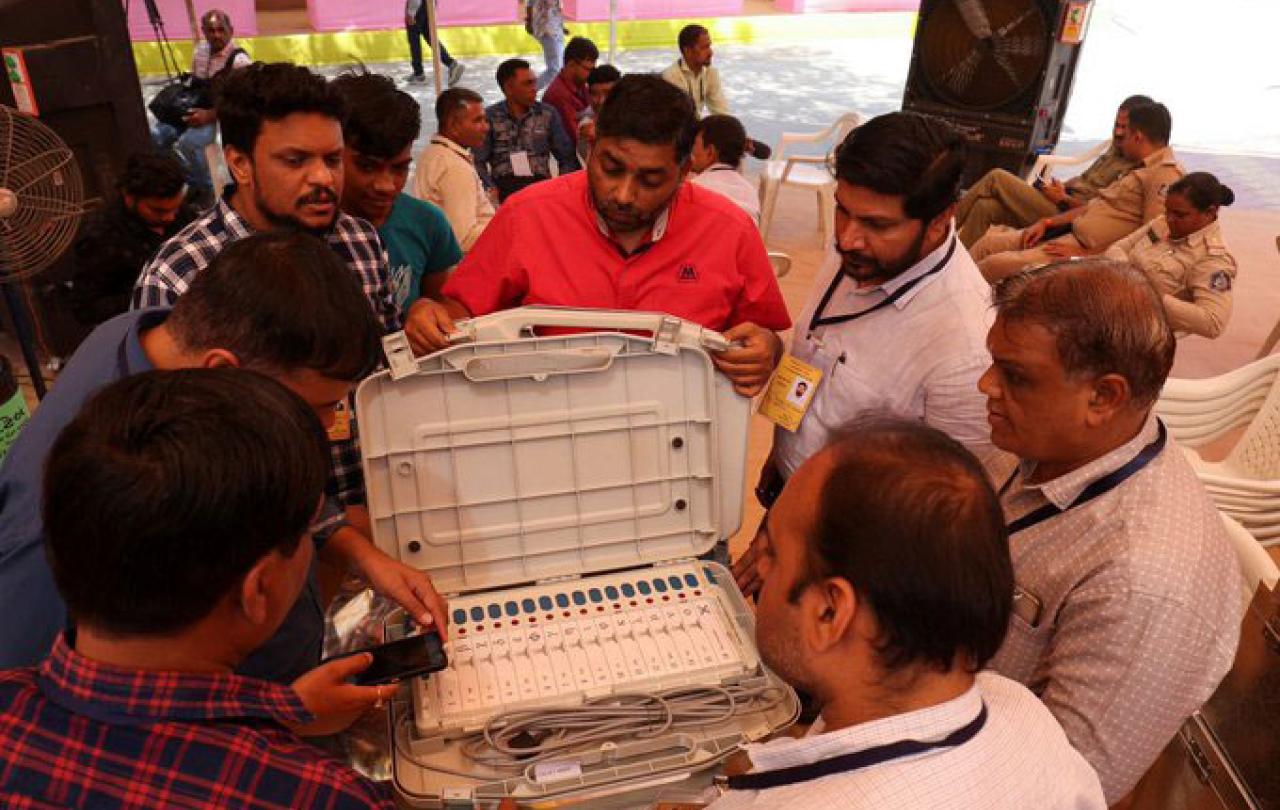
After 44 days of voting across India, 640 million people entered 5.5 million election booths to choose who would be their next Prime Minister.
Finally, on June 4th the result was announced, and India had chosen the devout Hindu incumbent PM Narendra Modi.
But wait for the twist! Mr Modi announced way ahead of the elections that his ruling BJP party would win a significant majority of 400 seats out of the 543 in the Lower House. Many of the pollsters felt this was possible, among them Axis My India, the country’s most prominent polling company. Data-driven pollsters and an action-filled mass-media told the world that Mr Modi would have his thumping majority for a third consecutive term. Bafflingly not…
When the results were counted on June 4th it turned out that Mr Modi’s BJP managed a disappointing 292 seats, dropping it short of the majority needed to continue the status quo of Indian governance.
Pradeep Gupta, Founder and CEO of Axis My India, wept in front of media cameras, revealing to the hundreds of millions of voters that even after accurately predicting so many national and state elections, he can also get things terribly wrong.
The world media was largely shocked but couldn’t hide its glee. The Economist told readers on its front cover that Modi’s ethno-nationalist shortfall was a “triumph for democracy.” The Financial Times told its readers that Modi was “weakened”, and other headlines across the globe revealed that even the “most popular world leader” can be humbled.
Even though it was startling to most of those who kept an eye on this mammoth undertaking of democracy I was strikingly surprised to notice that no one claimed that the election was “rigged” or that there was “Russian interference” (or Chinese in the case of India)! It was simply accepted…alliances were struck and, within a day, 1.4 billion people in India moved ahead with Mr. Modi still as its PM, now heading the National Democratic Alliance parliamentary grouping. The smoothness of the political system after such a seismic surprise is quite astonishing to a “westerner” like me. In our “sophisticated” part of the world we seem to be confused as to who has won an election or even a referendum for that matter.
“Democracy” to many millions in India simply means, “elections” and in some towns and cities people queued for six hours to vote.
Mr Modi lost in the city of Ayodhya! This is where he consecrated the controversial Hindu temple on top of the ruins of a sixteenth century mosque that Hindu nationalists demolished in 1990. A disapproval by the people of the Hindu hub of Ayodhya is like saying that the Taliban have now decided to wave the rainbow flag… or that the state of Texas is now officially going full on vegan.
It’s interesting that no politician or media outlet echoed the chants and mantras of western elections or referendums in recent years and roared, “the people don’t know what they’ve voted for…so let’s do the vote again!” Quite strange for a nation whose GDP per capita is only $2,300…
350 million people in India live below the poverty line and I would go as far as to argue that 450 million of its inhabitants do not even know what the United Nations is let alone what it stands for. “Democracy” to many millions in India simply means, “elections” and in some towns and cities people queued for six hours to vote. Human Rights, Freedom of Expression or Religion are alien ideas when all you need is a meal.
It is humbling not just for Narendra Modi as the mass media have said in the west but even for keen observers here such as myself. That’s the first lesson.
The second lesson from this stunning outcome is to never ignore the people you think you can easily ignore…
It was the poor (even Hindus) whose homes were blatantly demolished to build the Hindu Temple in Ayodhya that went against Mr Modi. It was the farmers who protested for months for their financial security that decided that their leader is not really a man of the commoner but of the corporates. At least that’s the image Mr Modi gave them. About 55 per cent of India’s population receives an income related to the agriculture industry.
Finally, the Dalit (lowest caste) community didn’t vote the way the BJP expected. Even though their PM is from the lower Ghanchi caste they didn’t see in him any action suggesting that he is one of them.
At the beginning of his decade of rule Mr Modi cunningly utilised the fact that he is from a low caste background, a simple tea-selling family and not educated at Oxford or Stanford. And it worked.
But now the very people he cast a net over are beginning to peer through his fickle facade. “The axe convinced the trees in the forest that because its handle was made of wood it was one of them” is a Turkish proverb that comes to mind. Eventually, the trees catch on. When you fool people time and again, eventually they get the antibodies.
UK Prime Minister Sunak is also a devout Hindu who often uses the Hindu term dharma when he talks about ‘duty to his nation.’ And yet he is quite the opposite on many other accounts. Sunak is from a very educated and wealthy background. He went to Winchester School and then on to Oxford and ran a hedge fund before entering politics. He is liked by many world leaders and admired by HM Treasury, the government department he used to run. A ‘technocrat’ in every sense of the word and yet he is facing the same doubts and demands from the electorate – about integrity. I do not wish to isolate PM Sunak on the integrity chart but leaders and those with tall responsibilities attract a higher demand. Wisdom in the Christian Bible says, “to whom much is given, much will be required.”
June 4th told a brief and bold story of PM Narendra Modi’s India. July 4th will reveal the mind of the United Kingdom. How will we treat the people or politicians we disagree with? Dutch theologian and professor Benno Van Den Toren once told me that the minute you laugh at an idea you disagree with, is the exact moment you lose access to understanding what the individual or idea is trying to say. Will we seek to understand? Or simply win? The ruling class in India won for a decade whilst ignoring their opponents and as a result eventually lost their majority. As important as the result on July 4th in the UK is what happens after, how we steer our hearts and treat those who didn't vote as we did.
That is the humbling lesson to learn from the 640 million voters of India.





